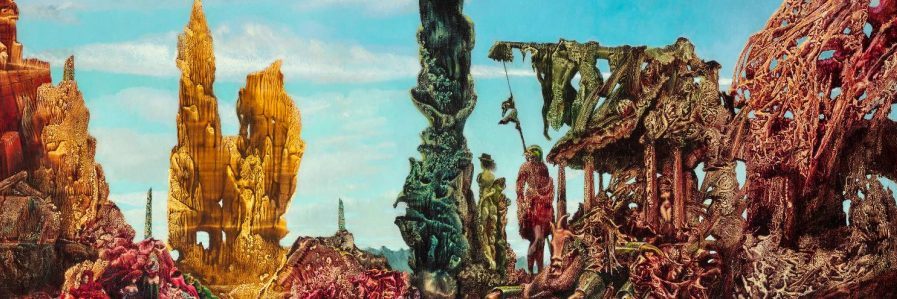Tag: Peli Grietzer
-
On the vibe shift, pt 1: Worldbuilding
See Part 2: Nameless, Faceless. Chatting with a friend last week, I mentioned I was writing a party report on the Lisbon ETH conferences for Spike. She said she was surprised. That there was a narcissism to the genre she’d expect to turn me off. A reasonable criticism—the format’s short history is ≈ synonymous with…
-
Zoom Call #1
And I said, I said, ‘a simple point that people forget to explain to outsiders about the consumption of random/plain/goofy/noisy artifacts is that it’s not the random/plain/goofy/noisy artifact that is doing the work but the 3000 years long acummulation of techniques for attentively scrutizing objects (which developed as a corollary of 3000 years of creating…
-
Re-engineering “taste”
One way I’ve found helpful to think about “culture,” at a more manageable scale, is through the metaphor of an unending variety show, with many theaters and stages (think music festivals—GovBall, Coachella). This neverending show presents a class of problems to any audience member attempting to grok an act, or to any act attempting to…
-
Undisciplined Squads of Emotion
Peli Grietzer’s Amerikkkkka is the kind of text that punches preternaturally out of its weight class, manages miracles. It back-charts five years of intellectual growth, cultural mappings, one-off gags and twelve-page academic endeavors that together begin to depict a certain type of lifeworld. I had the chance to gChat with Peli for a few hours…
-
Against Expression
In his introduction to The Ubuweb Anthology of Conceptual Writing, Craig Dworkin positions conceptual writing in opposition to romantic expression, to writing that conveys “the emotional truth of the self.” But he replaces it with a vision of writing that’s true to its linguistic self, writing that can’t be conceived of as taking any other form.
-
Vibe Vectors
Sianne Ngai and The Sublemon have done much, I think, for aesthetics by formalizing certain descriptive terms previously used informally: the zany, cute, and merely interesting (Ngai); the baroque, whimsy, and cheesy (Sublemon). I want to continue that project here.
-
Oscillation / Fashion
1. Oscillation You can never really tell when James Murphy’s being sincere, whether he’s making fun of others or making fun of himself. “Pow Pow”’s his statement of philosophy—“from this position / I can totally see how the decision was reached”—which is a sort of pragmatist-PoMo enlightenment: acknowledge perspective’s providence on truth and then turn…
-
New Fiction is Psychic Occupation
“How then, she had asked herself, did one know one thing or another about people, sealed as they were?” (Woolf, To the Lighthouse) Fiction—or more generally, longform narrative text—has long been the handyman of culture, serving whatever functions are needed at a historical moment. The Greek oral tradition, famously, functioned in part to preserve cultural…
-
Maps, Chords, and Effect Ideas
“A dramatic presentation should be an act of initiation during which the spectator will be awed and even terrified… During that experience of terror or frenzy… the spectator will be in a position to understand a new set of truths, superhuman in quality.” (Wallace Fowlie on Artaud’s “Theater of Cruelty”) Gabe Duquette, writing at Liposuction,…
-
A Few Types of Literary Compression
“And I said to Mabel, I said, ‘computational aesthetics, super-short. Jürgen Schmidhuber’s Theory Jürgen Schmidhuber, an AI theorist and theoretical computer scientist, has proposed a computational account of aesthetic judgments. In his view, a stimulus is judged to be beautiful or attractive by a subject T to the extent that the stimulus is compressible for…
